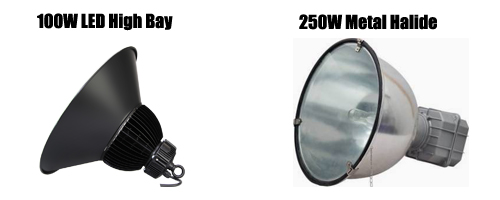Easy Steps on How To Calculate Watts For Analyzing Energy Efficiency Projects
Time:2016-01-15 Views:2394 Compile:SUNPER
Have you ever wondered how you can determine watts for analyzing the energy efficiency projects? Well, if so, here are some simple steps on how you can easily do this. However, to learn how you can do this, it is important you first understand what is watt.
Definition of Watt
Watt is basically defined as the unit of electric, thermal or mechanical power in the MKS and SI systems. It is usually equal to 1 Joule per one second or ten ergs per second for a horsepower. For the electric power, watt is equal to 1 volt-ampere. For a simpler definition of Watt, it is said to be the starting point at which one gets charged for energy used and thus, watt is directly related to the amount of energy used.
From the definition of Watt, it is clear that we can improve energy efficiency by simply lowering wattage. Thus, having some knowledge on how watts are related to the energy efficiency is very crucial especially to those who are not aware about the electricity. The key to reducing the cost of used energy at your place of business or in your home is by counting watts. This is pure mathematics and once you know how it is done, you can effectively save energy at your place. Here is how you can calculate watts.
To start with, one must know how wattage reduction is calculated so as to improve the energy efficiency. The process involved is not complicated since it is a subtraction problem. Knowing the difference in the wattage may have a great significant impact. Once you understand this concept, you can be able to make an informed decision any time you are buying products using electricity.
The 250 Watt MH/HPS vs the 100 Watt LED High Bay Equivalent

To understand it better, it is good to compare two lamps. The 250 watt standard MH/HPS will be on the left while the 100 watt LED High Bay shall be on the right. Both of these lamps have suitable replacements and thus they can be used for in the same application. The old 250 watt MH/HPS is likely cheaper when purchasing but for the case of the compact LED High Bay you will save more money. It is important to know the difference.
Finding wattage difference
To see the difference, you simply need to carry out some simple mathematical subtraction problems. By using the above two lamps to calculate the wattage difference, we do the following.
Take the 250 watt MH/HPS and subtract 100 watt LED High Bay. By doing so, you will geta 150 watts. (250 watts- 100 watts = 150 watts)
Using the above obtained information, one can easily know how dmuch each lamp will cost him or her annually.
Calculating Kilowatt hour (Kwh)
The calculations involved are a bit more complex, but still manageable to carry out. To get the cost difference of the two, wattages are used in determining the Kwh. The procedure for doing this calculation is as follows.
Fixture Quantity multiplied by Fixture Wattage to get the Total Watts
Total Watts divided by 1000 = Kilowatts
Kilowatts multiplied by (Hours of Usage) to give Kilowatt per Hour
(Kilowatt per Hour) multiplied by (Cost of Energy) to get the Annual Cost
To know what the annual cost will be, follow the example below with exact figures
Fixture Quantity = 10 lights
Fixture wattage for each= 250 watts for MH/HPS and 100 watts for the LED high bay
Hours of Usage gives 2000 hours
Average Energy Rate is $ 0.10 per Kilowatt per Hour
To get the annual cost for ten-250 watt MH/HPS, proceed as follows
10 (Fixtures) multiplied by 250 (Watts Each) to give 2500 Watts
2500 watts divided by 1000 = 2.5 Kw
2.5 Kw X 2000 Hours per year gives 5000 Kwh
5000 Kwh X 0.10 =$500. Hence, you will require $500 to operate 10 lamps each with 250 Watt MH/HPS.
To see how much it costs to operate ten-100 Watt LED high bay, proceed as follows
10 (Fixtures) multiplied by 100 (Watts Each) which is equal to 1000 watts
1000 Watts divided by 1000 = 1 Kw
1 Kw X 2000 Hours per year gives 2000 Kwh
2000 Kwh X $0.10 = $200. Hence you will need $ 200 to operate ten lamps with 100 watt LED high bay
The difference in the annual cost will be $500 - $200 =$300. Thus, with the LED high bay you will save $300 per year. Per fixture, you will be saving $300 divided by 10 which gives $30. Hence, the annual savings per year per each fixture shall be $30.
All the above shows that there is a good return on doing this investment. An example is that you can spend up to $30 per fixture and get 100 % payback within the first year. Since most of the fixtures can last up to five years, and if the fixtures pay themselves in one year, then you will have four years of savings. The savings you get will be $1200 which is a 400 % return. Surely, this is great and you now know what you will purchase next time.
More Posts
▇ What to Know When Replacing a 400W Metal Halide
A Closer Look at Light Distribution Patterns
Next:Relevance of Photopic and Scotopic lumens to the Lighting Designers
User comments
Your current input 0 characters(Reply for at least 6 characters)。
Online Services

Mobile: +86 18938902515 (Mr.Allen)
Tel:+86 755 23159099
Fax:+86 755 61673151
E-mail: sales@sunper.net
zip code: 518108











